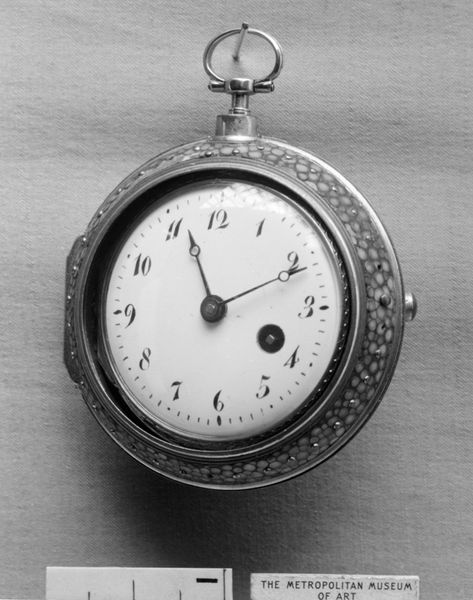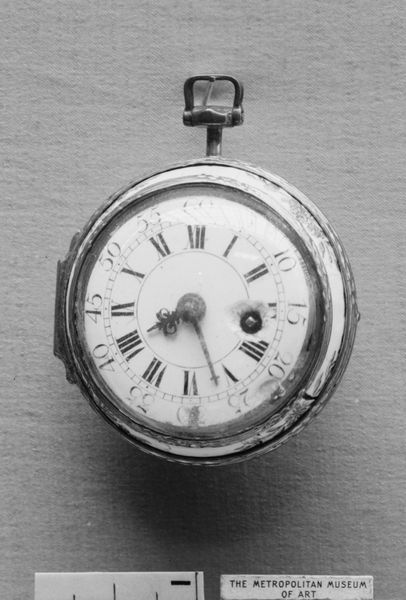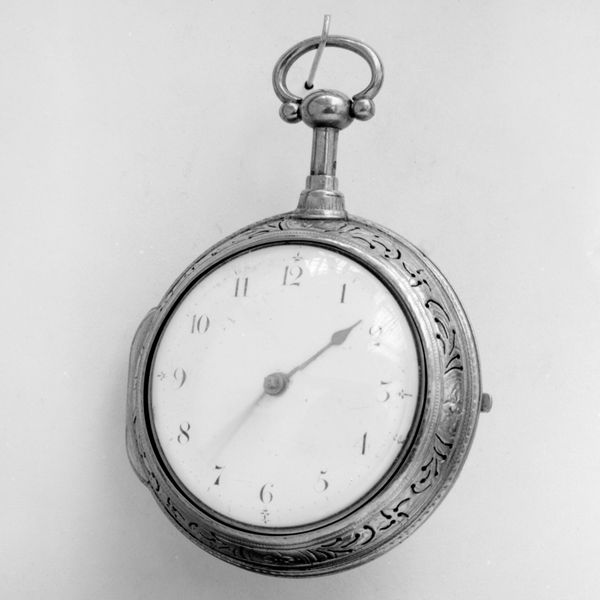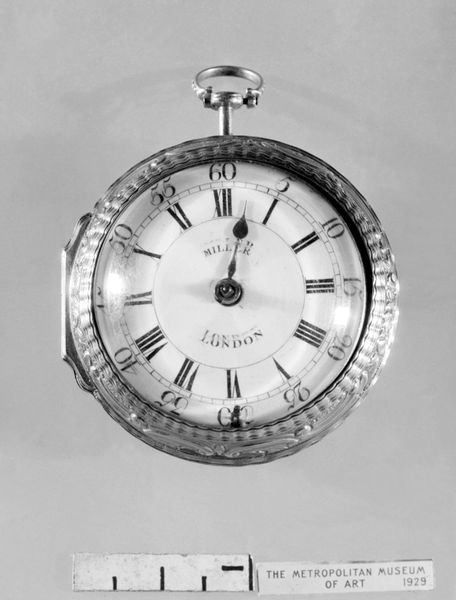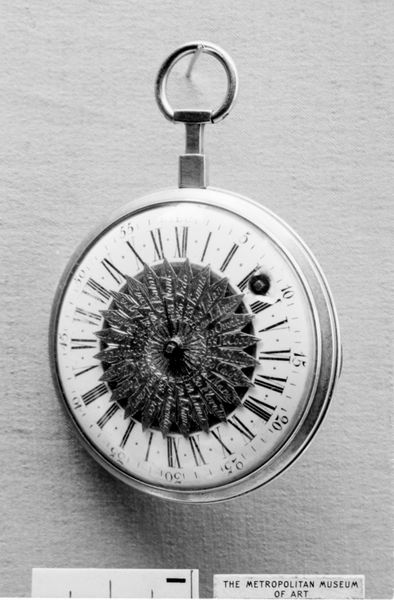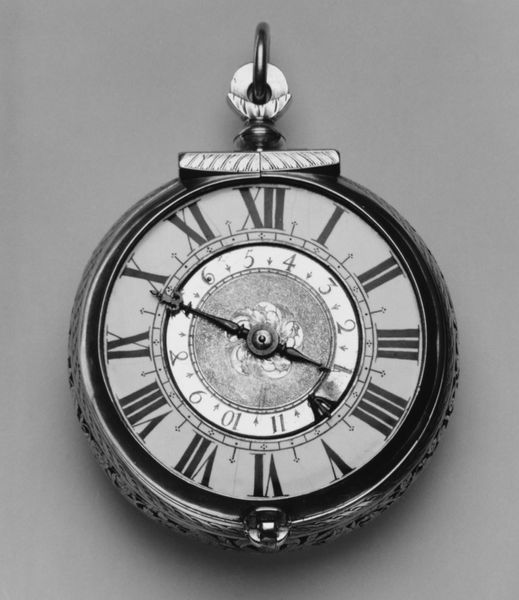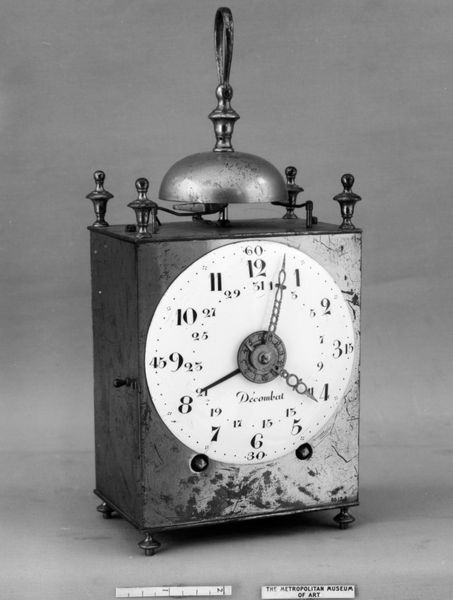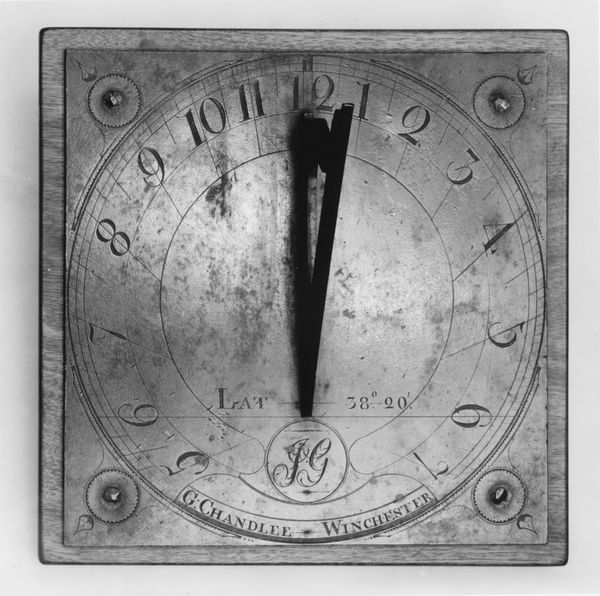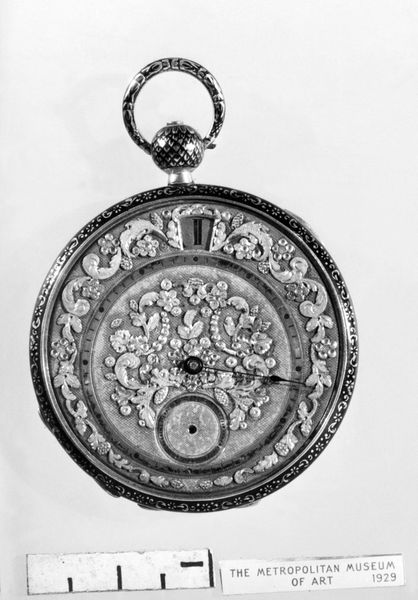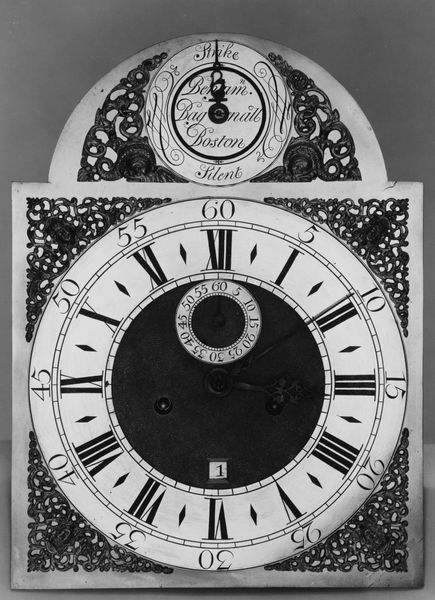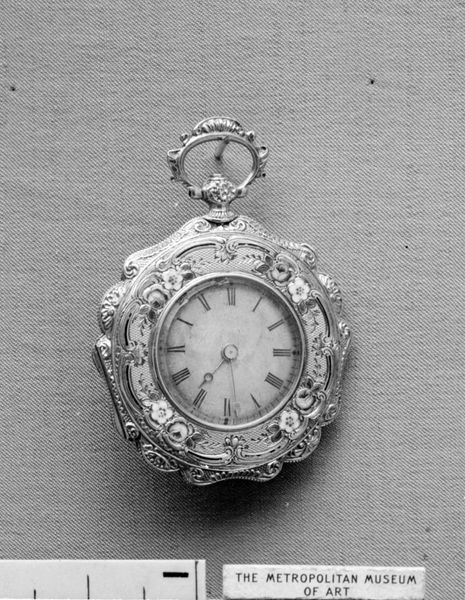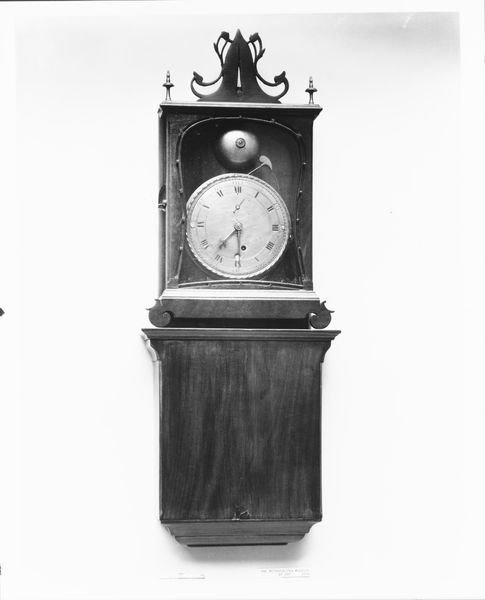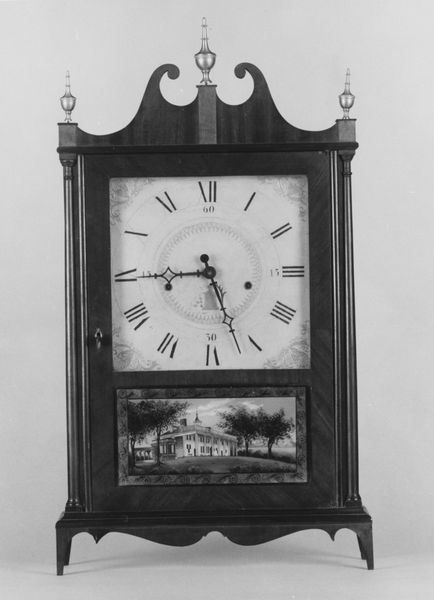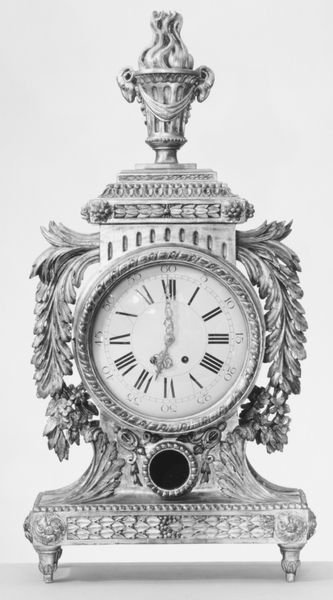
metal, sculpture
#
metal
#
sculpture
#
decorative-art
Dimensions: 1 1/4 × 1 1/4 in. (3.2 × 3.2 cm)
Copyright: Public Domain
Curator: Let's discuss this fascinating piece, simply titled "Watch," dating back to the 17th century, currently residing at the Metropolitan Museum of Art. The primary materials are metal, crafted into a sculpture—a wearable timekeeping device. Editor: It's such a serious little box! Like a tiny metallic face staring out at you, so precise and ornate. You just know whoever carried this felt incredibly important. Did time feel different then, slower maybe? Curator: Well, the proliferation of personal timekeeping certainly marks a shift in how time was perceived and experienced. Time became increasingly individualized, less about natural rhythms and more about measurable units, influencing social structures and labor practices, right down to personal anxieties. Editor: Precisely. I can feel that anxiety just looking at it. A perfectly contained metal prison for time itself! Curator: Beyond the immediate functionality, consider the aesthetics, typical of decorative arts from the period. The engraving, the choice of materials. A potent symbol of status and power. And the fact that time, itself, can be so oppressively bound. Editor: And yet it's also gorgeous! Those floral embellishments are so intricate. It speaks to how craft was so essential—every object becomes a vehicle to express artistry and vision. I feel pulled between fascination and frustration looking at it. Like the thing represents restriction in itself! Curator: Absolutely. These pieces existed within a matrix of cultural, political, and economic factors, influencing and influenced by everything from the rise of capitalism to religious reforms. It’s really asking us to interrogate that time, place and position in relation to a lot of change and revolution in thinking about time. Editor: And also a reflection on what it means to chase a future when you’re also carrying the physical weight of the past around with you at all times. This is one heavy message contained within a petite and polished prison of time. Curator: An evocative synthesis. Perhaps understanding such personal historical references can lead us to greater contextualization and compassion around those ideas of chasing the past. Editor: Agreed! Time... what a concept! A reminder that we must remain active participants rather than passive observers to the current of time.
Comments
No comments
Be the first to comment and join the conversation on the ultimate creative platform.
